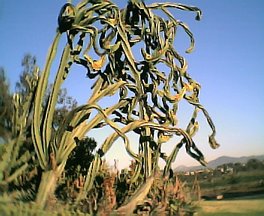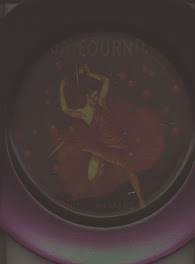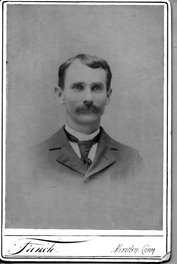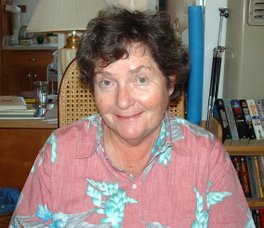Just Learning

Kitchen Studio
Friday, December 9, 2011
Holidays
In October I reached the age of 70. My son and daughter-in-law threw a party for me at their home. People said nice things, and I cried. Let the love in.
Thanksgiving brought my sister to be my first guest in this apartment. Slight snag: the borrowed aerobed filled all the living room floor space, so I had to deflate and fold it every morning. We had a lovely dinner at a friend's home, and visited several museums. Yes! San Diego has art museums.
Building toward Christmas has been frazzling and fun. I just started volunteering at an organization that helps the homeless. Art class continues to challenge and fascinate me. Women's support group anchors and connects me.
Over my shoulder I can see the full moon shining through mist in a pale purplish sky.
Things could be worse.
Labels:
70th birthday,
art museum,
nature images,
recovery,
sister,
volunteer
Monday, October 3, 2011
Being Young and Not Sensible
Yesterday I relived an event when I was seventeen, when I felt humiliated, furious, and very, very stubborn. I believed with all my heart that my life depended on breaking conventions, on not doing what was expected of me, on finding my own way despite difficulties. While I recognize some of those feelings as close to a child's tantrum, I respect their power. Strong, absolute emotion did help me stumble on my own path, however clumsily.
So, when I picked up a copy of Spin Magazine while waiting for a haircut, I didn't reject completely the destructive posturing of some of the interviewees. For one thing, they are not in the world to please me. There was an article I could identify with, about hip-hop and rap in Tunisia, which is credited, along with communication facilitated by Facebook, with focussing dissatisfaction with the regime and helping topple it. The singers themselves had no idea what would happen, but found themselves revolutionary icons. They were defiant and true enough to themselves to risk saying what young people were feeling. Another Tunisian rapper said he is all about the music and not politics. He already had hostages to fate, a family to support.
My Dad once protested that I could only learn by running my head into a brick wall. Hmm. I do have some neck injuries.
So, when I picked up a copy of Spin Magazine while waiting for a haircut, I didn't reject completely the destructive posturing of some of the interviewees. For one thing, they are not in the world to please me. There was an article I could identify with, about hip-hop and rap in Tunisia, which is credited, along with communication facilitated by Facebook, with focussing dissatisfaction with the regime and helping topple it. The singers themselves had no idea what would happen, but found themselves revolutionary icons. They were defiant and true enough to themselves to risk saying what young people were feeling. Another Tunisian rapper said he is all about the music and not politics. He already had hostages to fate, a family to support.
My Dad once protested that I could only learn by running my head into a brick wall. Hmm. I do have some neck injuries.
Labels:
anger,
introspection,
music,
revolution,
youth
Friday, September 30, 2011
Book Review: The Summer Without Men
BOOK REVIEW: THE SUMMER WITHOUT MEN, BY SIRI HUSTVEDT, PICADOR PAPERBACK, NEW YORK, NY 2011
“I need a pause,” announces Mia’s husband of 30 years, then leaves. The writer lets the reader look over Mia’s shoulder. She reacts in a briefly catastrophic way, then takes a summer to think and heal. Her mother lives in a retirement home, where Mia visits and grows closer to a quirky set of old women. At the same time, Mia interacts with twelve-year-old girls taking her creative writing class. Both groups revive memories, themes of identity, thoughtful exploration of what it has meant to Mia to be a woman.
Hustvedt’s writing by turns evokes laughter, sadness, perspective, ironic recognition, and haunting love. She can certainly turn a phrase! At 182 pages, this is a quick read that I look forward to savoring again.
“I need a pause,” announces Mia’s husband of 30 years, then leaves. The writer lets the reader look over Mia’s shoulder. She reacts in a briefly catastrophic way, then takes a summer to think and heal. Her mother lives in a retirement home, where Mia visits and grows closer to a quirky set of old women. At the same time, Mia interacts with twelve-year-old girls taking her creative writing class. Both groups revive memories, themes of identity, thoughtful exploration of what it has meant to Mia to be a woman.
Hustvedt’s writing by turns evokes laughter, sadness, perspective, ironic recognition, and haunting love. She can certainly turn a phrase! At 182 pages, this is a quick read that I look forward to savoring again.
Book Review: The Latte Rebellion
BOOK REVIEW
THE LATTE REBELLION, BY SARAH JAMILA STEVENSON, FLUX, LLEWELLYN WORDLDWIDE LTD., WOODBURY, MINNESOTA, 2011
TYPE: YOUNG ADULT
High School Senior Asha gets tired of racial slurs and being excluded from ethnic clubs at school because she doesn’t fit neatly into one category. After all, lots of students at her school have heritage from more than one continent. In fact, they’re just plain brown, like most people on earth.
The Latte Rebellion starts as a gesture of defiance and a money making scheme. Asha and her friend Carey hope many kids will buy a T-shirt that proudly proclaims the value of being “Latte,” mixing coffee and milk to produce something delicious.
Their idea sparks a movement that spreads nation-wide, and immediately goes far out of their control. Asha is surprised to find herself a spokesperson, involved with college activists, and almost expelled from school when action and reaction get too hot for the high school administration.
College admission worries, themes of loyalty, betrayal, confusion, forming one’s own values, and, of course, cute guys, make this story appealing to older teens.
THE LATTE REBELLION, BY SARAH JAMILA STEVENSON, FLUX, LLEWELLYN WORDLDWIDE LTD., WOODBURY, MINNESOTA, 2011
TYPE: YOUNG ADULT
High School Senior Asha gets tired of racial slurs and being excluded from ethnic clubs at school because she doesn’t fit neatly into one category. After all, lots of students at her school have heritage from more than one continent. In fact, they’re just plain brown, like most people on earth.
The Latte Rebellion starts as a gesture of defiance and a money making scheme. Asha and her friend Carey hope many kids will buy a T-shirt that proudly proclaims the value of being “Latte,” mixing coffee and milk to produce something delicious.
Their idea sparks a movement that spreads nation-wide, and immediately goes far out of their control. Asha is surprised to find herself a spokesperson, involved with college activists, and almost expelled from school when action and reaction get too hot for the high school administration.
College admission worries, themes of loyalty, betrayal, confusion, forming one’s own values, and, of course, cute guys, make this story appealing to older teens.
Labels:
biracial,
book review,
social issues,
Young Adult
Friday, May 6, 2011
Monday, February 28, 2011
Mandela's Way
MANDELA’S WAY
FIFTEEN LESSONS ON LIFE, LOVE, AND COURAGE
BY RICHARD STENGEL
CROWN PUBLISHERS, RANDOM HOUSE, NEW YORK 2009
Pp 121-122
(The brutal head of the prison in which Mandela spent so many years was being transferred.)
“Badenhorst said to me something like, ‘I just want to wish you people good luck.’ He said this like a human being, and I was a bit taken aback by his moderate and even considerate tone. I must say, that was a bit of a surprise. I thanked him. I thought about this for a long time afterward. What it basically showed me is that these men were not inhuman, but their inhumanity had been put upon them. They behaved like beasts because they were rewarded for such behavior. They thought it would result in a promotion or advancement. That day, I realized that Badenhorst was not the man he seemed to be, but a better man than how he had behaved.”
This epiphany goes to the heart of Mandela’s belief about what makes us human. He was a better man than how he had behaved. His motives were not as cruel as his actions. No one is born prejudiced or racist. No man, he suggests, is evil at heart. Evil is something instilled in or taught to men by circumstances, their environment, or their upbringing. It is not innate. Apartheid made men evil; evil did not create apartheid.
While his colleagues saw their warders and jailers as monolithic, the embodiment of the heartless apartheid system, Mandela generally tried to find something decent and honorable in them. Ultimately, he came to see them as victims of the system as well as perpetrators of it.
My Comment:
These reflections show the attitudes which helped keep South Africa from plunging into national civil war on racial lines. Mandela convinced enough people that a new government had to care about all the people. This empowered Reconciliation, in which police apologized for their actions, and families at least learned what had happened to their relatives. Bishop Desmond Tutu’s role came out of his experience as a leader of a religion which teaches that confession, acknowledgment of responsibility with intent to reform, precedes forgiveness. In order to live with each other there was a psychological and spiritual necessity to grieve together. There had always been many, many people of all races who had struggled for justice, refusing to demonize each other.
We have been reflecting on evil at my church. An important thought, attributed to Martin Luther King Jr., is that there is a little good in the worst of us, and a little evil in the best of us. This insight has emerged in many traditions through the centuries. Mandela’s biographer interprets the passage above as meaning a system, a guiding structure, can bring out very different aspects of an individual’s character and behavior. Therefore, changing the system tends to change people’s behavior. It leaves hanging the question of whether the organizers of a repressive system are evil. Perhaps for Mandela that is not the point. The point is to move forward with opportunities for people to live in dignity, negotiate with each other without violence for the goods, and the good, of the world.
FIFTEEN LESSONS ON LIFE, LOVE, AND COURAGE
BY RICHARD STENGEL
CROWN PUBLISHERS, RANDOM HOUSE, NEW YORK 2009
Pp 121-122
(The brutal head of the prison in which Mandela spent so many years was being transferred.)
“Badenhorst said to me something like, ‘I just want to wish you people good luck.’ He said this like a human being, and I was a bit taken aback by his moderate and even considerate tone. I must say, that was a bit of a surprise. I thanked him. I thought about this for a long time afterward. What it basically showed me is that these men were not inhuman, but their inhumanity had been put upon them. They behaved like beasts because they were rewarded for such behavior. They thought it would result in a promotion or advancement. That day, I realized that Badenhorst was not the man he seemed to be, but a better man than how he had behaved.”
This epiphany goes to the heart of Mandela’s belief about what makes us human. He was a better man than how he had behaved. His motives were not as cruel as his actions. No one is born prejudiced or racist. No man, he suggests, is evil at heart. Evil is something instilled in or taught to men by circumstances, their environment, or their upbringing. It is not innate. Apartheid made men evil; evil did not create apartheid.
While his colleagues saw their warders and jailers as monolithic, the embodiment of the heartless apartheid system, Mandela generally tried to find something decent and honorable in them. Ultimately, he came to see them as victims of the system as well as perpetrators of it.
My Comment:
These reflections show the attitudes which helped keep South Africa from plunging into national civil war on racial lines. Mandela convinced enough people that a new government had to care about all the people. This empowered Reconciliation, in which police apologized for their actions, and families at least learned what had happened to their relatives. Bishop Desmond Tutu’s role came out of his experience as a leader of a religion which teaches that confession, acknowledgment of responsibility with intent to reform, precedes forgiveness. In order to live with each other there was a psychological and spiritual necessity to grieve together. There had always been many, many people of all races who had struggled for justice, refusing to demonize each other.
We have been reflecting on evil at my church. An important thought, attributed to Martin Luther King Jr., is that there is a little good in the worst of us, and a little evil in the best of us. This insight has emerged in many traditions through the centuries. Mandela’s biographer interprets the passage above as meaning a system, a guiding structure, can bring out very different aspects of an individual’s character and behavior. Therefore, changing the system tends to change people’s behavior. It leaves hanging the question of whether the organizers of a repressive system are evil. Perhaps for Mandela that is not the point. The point is to move forward with opportunities for people to live in dignity, negotiate with each other without violence for the goods, and the good, of the world.
Labels:
Apartheid,
lessons,
Mandela,
non-violence,
prison,
racist,
South Africa
Friday, February 18, 2011
Fashion and Faith
BOOK REVIEW 1
VISIBLY MUSLIM:
FASHION, POLITICS, FAITH
EMMA TARLO
BERG, OXFORD AND NEW YORK, 2010
“Visibly Muslim,” was featured on NPR book notes in February 2011. I was attracted by the hope of increasing my understanding of, and communication with, Muslim women in San Diego and elsewhere in the United States. While anthropologist Tarlo concentrates on the UK, mostly London, the insights are transferable.
“Muslim,” or “Islamic,” includes enormous variety of religious practice, ethnicity, culture and philosophy. I was deeply impressed by several young women who tell their stories of choosing clothing to express their identities as Muslim Americans or Muslim Europeans. They are thoughtful, playful, assertive women, active citizens of democracies. Several honor more than one culture and race as part of their origins, so that they are leaders in exploring how multiculturalism can enrich society.
How they perceive themselves may be in tension with how others perceive them. A hijabi, a woman who covers her hair, has become a target of abuse and assault in Europe as being associated somehow with terrorism. Photos of a woman whose whole head and figure are covered by the caftan-like abaya constantly accompany media coverage of terrorism.
A woman in jeans and tunic who winds a beautiful scarf around her head, leaving face and neck uncovered, may draw criticism from some Muslims who expect more covering, discomfort from some Westerners, or admiration from almost anyone.
Women, and men, are making an effort to affirm religious identity while being part of a global youth culture. T-shirts with Islamic messages, and hoodies with Groener-like graphics, surprised me. It reminds me of my own quandary as a Catholic school girl, wanting to be modest AND sexy, while clinging to wearing my Miraculous Medal around my neck.
It also surprised me to learn that in the UK, schools routinely adapt uniforms so that students from differing religions or cultures can meet their own dress standards, keeping the uniform’s colors. Schools consult with regional or national councils of religions and cultures to serve their local population.
This well researched book with its lively interviews and informative footnotes lives up to its promise to educate on fashion, politics, and faith in a world which includes 1.5 billion people whose religion is Islam.
Irene Grumman
February 18, 2011
VISIBLY MUSLIM:
FASHION, POLITICS, FAITH
EMMA TARLO
BERG, OXFORD AND NEW YORK, 2010
“Visibly Muslim,” was featured on NPR book notes in February 2011. I was attracted by the hope of increasing my understanding of, and communication with, Muslim women in San Diego and elsewhere in the United States. While anthropologist Tarlo concentrates on the UK, mostly London, the insights are transferable.
“Muslim,” or “Islamic,” includes enormous variety of religious practice, ethnicity, culture and philosophy. I was deeply impressed by several young women who tell their stories of choosing clothing to express their identities as Muslim Americans or Muslim Europeans. They are thoughtful, playful, assertive women, active citizens of democracies. Several honor more than one culture and race as part of their origins, so that they are leaders in exploring how multiculturalism can enrich society.
How they perceive themselves may be in tension with how others perceive them. A hijabi, a woman who covers her hair, has become a target of abuse and assault in Europe as being associated somehow with terrorism. Photos of a woman whose whole head and figure are covered by the caftan-like abaya constantly accompany media coverage of terrorism.
A woman in jeans and tunic who winds a beautiful scarf around her head, leaving face and neck uncovered, may draw criticism from some Muslims who expect more covering, discomfort from some Westerners, or admiration from almost anyone.
Women, and men, are making an effort to affirm religious identity while being part of a global youth culture. T-shirts with Islamic messages, and hoodies with Groener-like graphics, surprised me. It reminds me of my own quandary as a Catholic school girl, wanting to be modest AND sexy, while clinging to wearing my Miraculous Medal around my neck.
It also surprised me to learn that in the UK, schools routinely adapt uniforms so that students from differing religions or cultures can meet their own dress standards, keeping the uniform’s colors. Schools consult with regional or national councils of religions and cultures to serve their local population.
This well researched book with its lively interviews and informative footnotes lives up to its promise to educate on fashion, politics, and faith in a world which includes 1.5 billion people whose religion is Islam.
Irene Grumman
February 18, 2011
Saturday, January 29, 2011
Books I'm Reading/Recently Read
The Bag Lady Papers/Penney
The Future of Islam/Esposito
Making a Literary Life/See
Dufy/Hunter
Dufy/Werner
The History of Love/Krauss
All I Want for Christmas is a Vampire
Recovering/Sarton
Blade Dancer/Viehl
Becoming Naturally Therapeutic/Small
Visibly Muslim/Tarlo
The Hypochondriacs/Dillon
Art: A Crash Course/Freeman
Huntsman What Quarry/Millay
Edvard Munch/Gossett
NPR provides me with some eclectic book recommendations. Some of these I read in depth; others I read the introduction, one or two chapters of interest, and skim the rest. When my sister the English professor recommends a book, I usually find it and read carefully. Some books I've owned for decades and continue to hold my attention.
The Future of Islam/Esposito
Making a Literary Life/See
Dufy/Hunter
Dufy/Werner
The History of Love/Krauss
All I Want for Christmas is a Vampire
Recovering/Sarton
Blade Dancer/Viehl
Becoming Naturally Therapeutic/Small
Visibly Muslim/Tarlo
The Hypochondriacs/Dillon
Art: A Crash Course/Freeman
Huntsman What Quarry/Millay
Edvard Munch/Gossett
NPR provides me with some eclectic book recommendations. Some of these I read in depth; others I read the introduction, one or two chapters of interest, and skim the rest. When my sister the English professor recommends a book, I usually find it and read carefully. Some books I've owned for decades and continue to hold my attention.
Friday, January 14, 2011
There's More Where That Came From
On one street corner in one city in the USA on a Saturday morning in front of a supermarket, a group of caring, devoted, committed people were assaulted while conducting the most basic business of citizenship and daily life. We can't afford the loss of these folks.
Yet, it heartens me that those who were harmed, and those who responded to help them, represent the people of my country. Thousands and thousands of parents are raising ethical, intellectually curious, proactive, loving children. In our millions, we try to live kindly, devotedly in family and work lives. We most emphatically give a damn!
There's more goodness, more willingness, more love where these indispensable people came from.
Yet, it heartens me that those who were harmed, and those who responded to help them, represent the people of my country. Thousands and thousands of parents are raising ethical, intellectually curious, proactive, loving children. In our millions, we try to live kindly, devotedly in family and work lives. We most emphatically give a damn!
There's more goodness, more willingness, more love where these indispensable people came from.
Labels:
assault,
citizenship,
ethical,
goodness,
Tucson
Sunday, January 9, 2011
Shifting Perspective
One's greatest weakness can also be one's greatest strength. The reverse also holds true. Last night KPBS aired a program on attention deficit disorder and attention deficit hyperactivity disorder. What stayed with me was the emphasis on playing to one's strengths, often creativity and thinking outside the box, risk-taking, entrepeneurship. These strengths can be supported by finding ways to deal with impulsivity and distractability. They recommended a book by Katie Kelly, "You Mean I'm Not Lazy, Stupid, or Crazy?" I was surprised to see how many books appeared on Amazon for adults with ADD as well as for parents of children with ADD. I was also surprised at the strong assertion that Ritalin is not harmful over time - WHEN PROPERLY PRESCRIBED - with history from 1937 to the present. It was stated that ADD is a brain-based disorder related to a particular gene. By the end of the program, I thought they shouldn't call it a disorder, but simply a variation. Still, medication allows people to concentrate, and one has to have an identifiable medical condition to be prescribed medication.
People spoke of "Soaring and Crashing." They described functioning superlatively well, then being unable to hold things together. One middle-aged man said he started three successful businesses and "ran each of them into the ground." On medication as an adult, his performance is more consistent.
It was very sad to hear of people, "leaving a trail of lost jobs and broken relationships." The behavior described sounds similar to that of bipolar disorder, for which it is often misdiagnosed.
Diagnosis involves a thorough investigation of one's life-time behavior, with the help of professionals who really know the subject. Self-assessment questionnaires are part of the process.
A strong indicator: A person often starts a task, decides a different task is first required, and goes on to a chain of tasks he/she hadn't intended to do, usually ending up never getting to the initial task.
Another indicator: Experiencing a life-time of scoldings: You could have done better. You're not trying. You failed because you just didn't pay attention. You spent too much time on (electronic games)(goofing off)(you name it). You're lazy, stupid, rebellious, ungrateful, crazy...
BUT: The cure for resulting low self-esteem? SUCCESS! Which is really possible. It's even possible to live without the gnawing anxiety over whether you can ever do it again, over feeling like an imposter. That calls for daily attention to the things that help. And a sense of humor.
People spoke of "Soaring and Crashing." They described functioning superlatively well, then being unable to hold things together. One middle-aged man said he started three successful businesses and "ran each of them into the ground." On medication as an adult, his performance is more consistent.
It was very sad to hear of people, "leaving a trail of lost jobs and broken relationships." The behavior described sounds similar to that of bipolar disorder, for which it is often misdiagnosed.
Diagnosis involves a thorough investigation of one's life-time behavior, with the help of professionals who really know the subject. Self-assessment questionnaires are part of the process.
A strong indicator: A person often starts a task, decides a different task is first required, and goes on to a chain of tasks he/she hadn't intended to do, usually ending up never getting to the initial task.
Another indicator: Experiencing a life-time of scoldings: You could have done better. You're not trying. You failed because you just didn't pay attention. You spent too much time on (electronic games)(goofing off)(you name it). You're lazy, stupid, rebellious, ungrateful, crazy...
BUT: The cure for resulting low self-esteem? SUCCESS! Which is really possible. It's even possible to live without the gnawing anxiety over whether you can ever do it again, over feeling like an imposter. That calls for daily attention to the things that help. And a sense of humor.
Subscribe to:
Posts (Atom)









